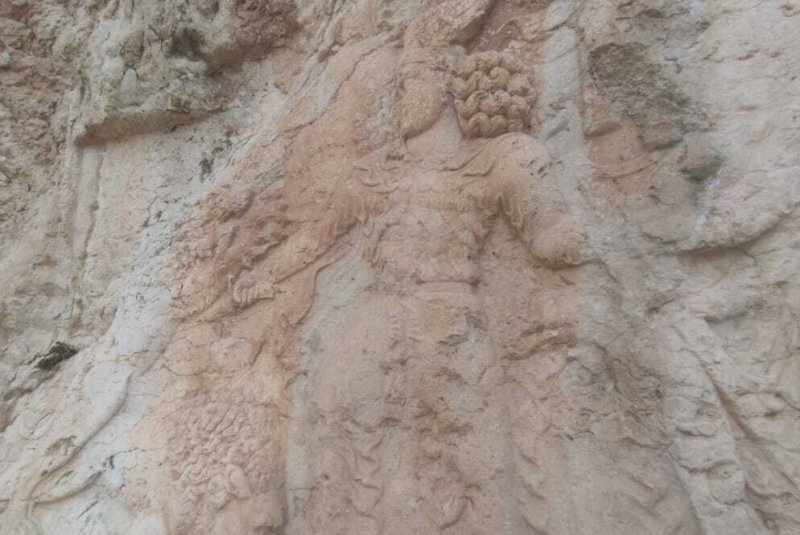Efforts underway to protect one of world’s biggest inscriptions

TEHRAN–A protection and preservation project has commenced on Kartir’s inscription, which is considered one of the biggest ancient inscriptions in the World.
Located in Sarmashhad, Kazerun county, southern Fars province, the inscription is one of the four inscriptions carved by the Kartir, the great and influential Sasanian priest.
A project is being implemented to prevent natural factors from damaging the inscription, Kazerun’s tourism chief Mohammad Javad Jokari said on Saturday.
Due to the efforts of the people of the region, the inscription, which bears Pahlavi script, is in a favorable condition, and nothing has been written or damaged on it in recent years, and everything is from the past decades, the official added.
Kartir is the only non-king person who was granted the right to have an inscription. His other inscriptions are in Naqsh-e Rajab near the UNESCO-designated Persepolis, Naqsh-e Rostam, a royal rock-hewn necropolis, and “Cube of Zoroaster”, a famed ancient quadrangular structure, all in Fars province.
Kartir’s inscriptions introduce Kartir and describe his ascent in detail. He wants the reader to follow the path of Ahura Mazda like him and briefly lists his deeds, like building fire temples and devoting property to other Mobads. He then lists his titles on the Sasanian court.
The ancient region, known as Pars (Fars), or Persis, was the heart of the Achaemenid Empire founded by Cyrus the Great and had its capital in Pasargadae. Darius I the Great moved the capital to nearby Persepolis in the late 6th or early 5th century BC. Alexander the Great defeated the Achaemenian army at Arbela in 331 and burned Persepolis apparently as revenge on the Persians because it seems the Persian King Xerxes had burnt the Greek City of Athens around 150 years earlier.
Persis became part of the Seleucid kingdom in 312 after Alexander’s death. The Parthian empire (247 BC–224 CE) of the Arsacids (corresponding roughly to the modern Khorasan in Iran) replaced the Seleucids' rule in Persis during 170–138 BC. The Sasanid Empire (224 CE–651) had its capital at Istkhr. Not until the 18th century, under the Zand dynasty (1750–79) of southern Iran, did Fars again become the heart of an empire, with its capital in Shiraz.
ABU/AM
Leave a Comment